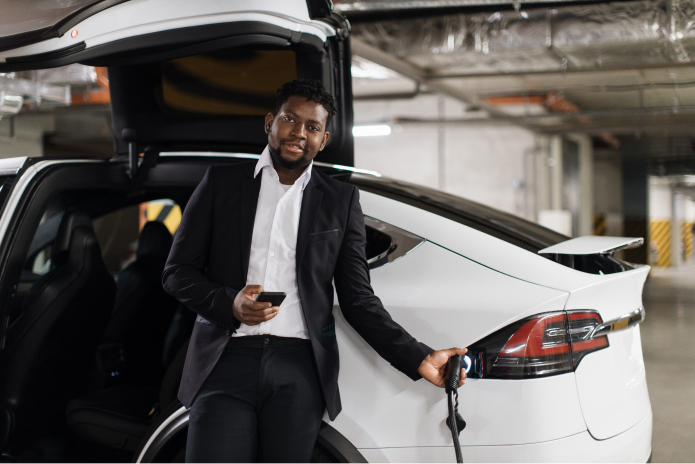Not long ago, the electric vehicle (EV) trend was at its peak. Backed heavily by ambitious politicians and businesses fighting to be on the cutting edge of the latest technologies, EV seemed like an unstoppable force.
But just a few short years later, the reality of putting the cart before the horse has set in as the EV market has struggled to gain traction for the majority of Americans. In this article we’ll explore how we got here and what needs to be done to give EV a fighting chance at long-term sustainability.
Crippled Before It Began
Unless you’ve lived under a rock for the past 4-8 years, you know the push for sustainable energy sources has been at the forefront of conversation in America. Leading the way was the charge to reduce pollution caused by combustion engines in consumer vehicles.
This is important to note, because the EV market was doomed before it ever got off the ground. The blame for the struggles of EV sits squarely on the shoulders of the government, whose actors got behind an idea and force-fed it through the pipeline, rushing critical R&D and planning phases that simply did not have enough time to keep up the pace that was being demanded of them.

Businesses are to blame as well, but less so. What we mean is that manufacturers who produce components for EV’s got caught up in the hype and rather than putting their foots down and asking for the proper time to develop the components correctly, they joined the rat race of being first to market with their technology to keep up with the government’s rushed agenda.
Now, we can’t fault businesses for doing this. If they hadn’t they would have been left behind. It was really an un-winnable situation for them. But the result was the first generation of EV’s that didn’t perform to consumers’ expectations, leaving a bad taste in their mouths. That was strike 1.
To their credit, EV manufacturers and their suppliers have been incredibly innovative on tight deadlines. There have been massive improvements in the technology in just a few short years. But these advancements should have been made in limited launch environments, testing generation 1 in a small batch and then going back to the drawing board for improvements.
A Multi-Faceted Problem
So if the government forcing manufacturers to speed up their timelines was strike 1, the next thing that has severely limited the potential of EV was strike 2. The technology inside the vehicle is just one pillar of the EV success map.
Another, equally significant pillar, is the out-of-car technology or in other words, the charging infrastructure. Again, the blame here is shared between the EV manufacturers and the government, but it really boils down to poor planning.
Charging stations are essential for EV to work, and the country will need to be blanketed with stations just like it is with gas stations for EV to be successful. This is a huge infrastructure project that nobody in their right mind would expect to complete in just a few years.
But instead of realizing this upfront, the government and the manufacturers proceeded at break-neck speed to launch the vehicles, without thinking about their practical use. What resulted was long lines and limited availability of charging ports, and ultimately, reduced confidence in the mind of the consumer and even fear – yes, fear of being stranded on the road.

So strike 2, you’ve now introduced a product that doesn’t perform as well as traditional gas-powered vehicles AND you’ve put fear into the minds of your consumer that they may wind up stuck on the side of the highway.
All Hope is Not Lost
Maybe it was the realization that they were heading for bankruptcy, but to their credit, the EV manufacturers have begun to pivot from the forced strategy led by the agenda-driven politicians. Rather than continue to dump billions of dollars into rushed R&D in order to put out the next poorly-planned strategy, manufacturers have hedged their bets.
They still see 100% EV as a long-term goal, but they’ve realized that reaching that goal in the next 5 years is unlikely. So they’ve very wisely come up with a middle-ground bridge in the form of hybrid vehicles.

What is a hybrid vehicle? One that has both an electric battery and a fuel tank. The idea is that these vehicles rely less heavily on gas for power, but it is still available for assistance if needed. This eliminates the potential of being stranded on the road for the consumer.
It also significantly improves the expected mileage for the vehicle before needing a recharge. Many hybrids use the fuel tank to actually charge the electric battery itself, so instead of using fuel to drive the engine, it is used to keep the battery alive longer.
Conclusion
We see hybrids as the saving grace of the EV market. They will serve as the bridge between gas and 100% electric. They will re-inspire confidence in the consumer. They will give the manufacturers and the government the time they need to develop the charging infrastructure and the inside-the-car technologies that will lead to sustainable success.
And while they may not satisfy the small pocket of die-hard environmentalists who would just as soon cut off all fossil fuel reliance in a heartbeat, they will satisfy the vast majority of Americans who understand that protecting the environment is important, but not at the cost of stranding your family on the side of a busy highway or paying more than your mortgage for a car.
Agree or disagree with the majority, in order for EV to work, it needs the support of the majority. And the majority has spoken – 100% EV in its current state is not ready yet.


